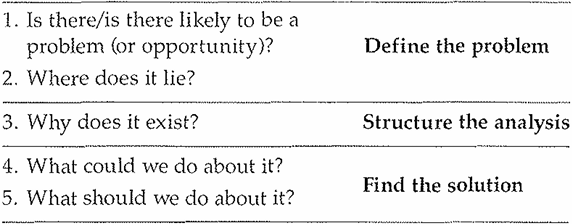


 Grammar
Grammar
 Tenses
Tenses
 Present
Present
 Past
Past
 Future
Future
 Parts Of Speech
Parts Of Speech
 Nouns
Nouns
 Verbs
Verbs
 Adverbs
Adverbs
 Adjectives
Adjectives
 Pronouns
Pronouns
 Pre Position
Pre Position
 Preposition by function
Preposition by function 
 Preposition by construction
Preposition by construction
 Conjunctions
Conjunctions
 Interjections
Interjections
 Grammar Rules
Grammar Rules
 Linguistics
Linguistics
 Semantics
Semantics
 Pragmatics
Pragmatics
 Reading Comprehension
Reading Comprehension|
Read More
Date: 2024-09-17
Date: 2024-10-01
Date: 2024-09-07
|
When you decide that a problem exists, you are usually perceiving a gap between the results you get now from a certain line of endeavor and the results you would rather have had. You are essentially recognizing that a particular situation in the world yields a specific result, which I call the Undesired Result (Rl).

The problem is that you do not like the result (e.g., Sales are declining), and you want some other result (e.g., Sales to be growing), which I call the Desired Result (R2). The solution then tells you how to get from R1 to R2.
Defining a problem in this way begins the process of Sequential Analysis,1 a particularly efficient problem-solving technique that involves finding the answers to a series of questions in logical sequence:
1. Is there/is there likely to be a problem (or opportunity)?
2. Where does it lie?
3. Why does it exist
4. What could we do about it?
5. What should we do about it?
1 Holland. B. Robert, Sequential Analysis, McKinsey & Company, London, 1972
The answers to the first two questions serve to define the problem, question 3 points you to finding its causes, and questions 4 and 5 deal with determining the best way to eliminate the problem (or to take advantage of the opportunity):

In communicating the results of your analysis, the answers to questions 1 and 2 become the introduction to your document, while the answers to the other questions lead to the points in the pyramid. I will present a formal way to define the problem so that you can move easily from it to write the introduction to a proposal or a final report.
|
|
|
|
"إنقاص الوزن".. مشروب تقليدي قد يتفوق على حقن "أوزيمبيك"
|
|
|
|
|
|
|
الصين تحقق اختراقا بطائرة مسيرة مزودة بالذكاء الاصطناعي
|
|
|
|
|
|
|
مكتب السيد السيستاني يعزي أهالي الأحساء بوفاة العلامة الشيخ جواد الدندن
|
|
|